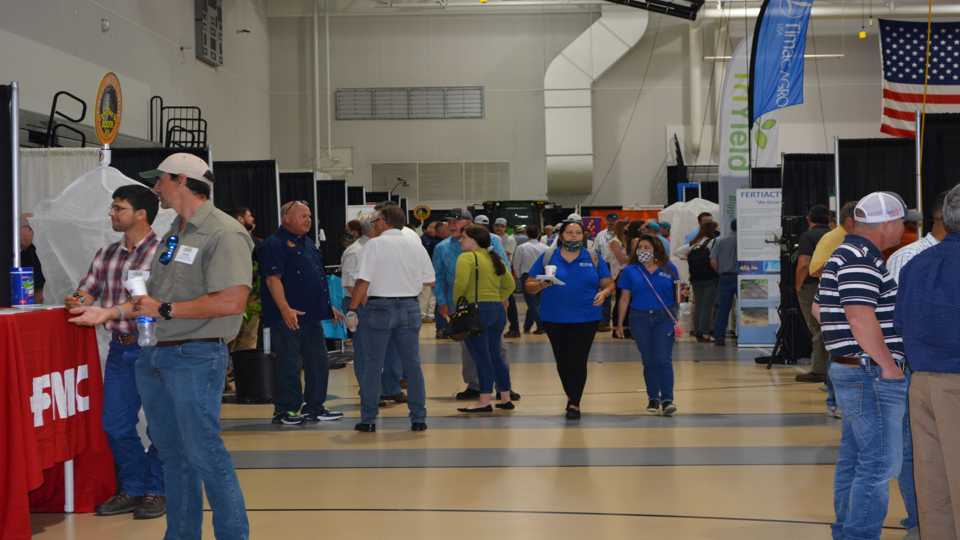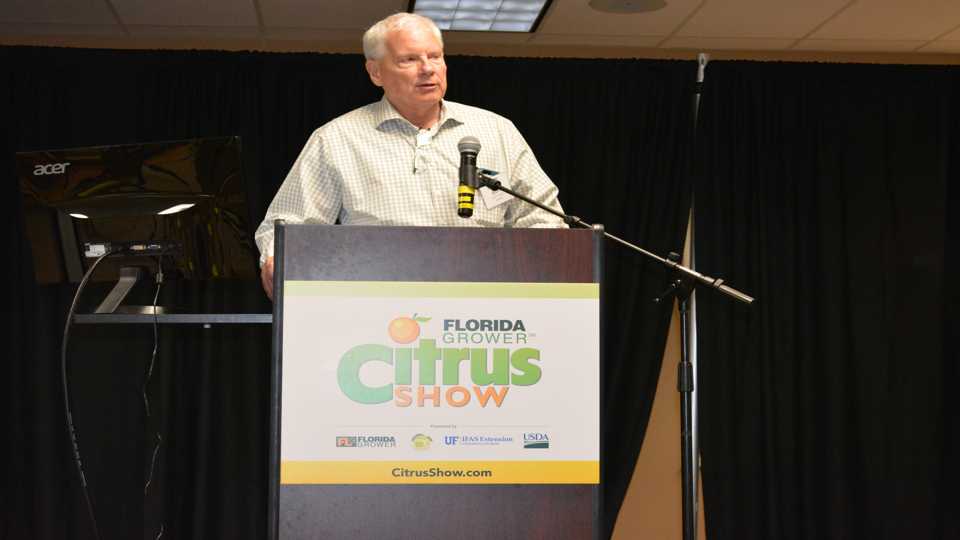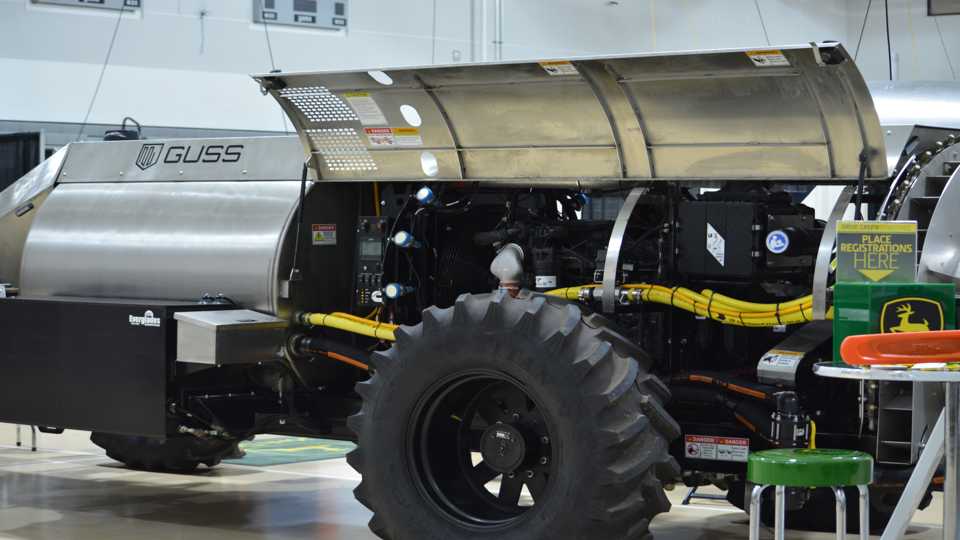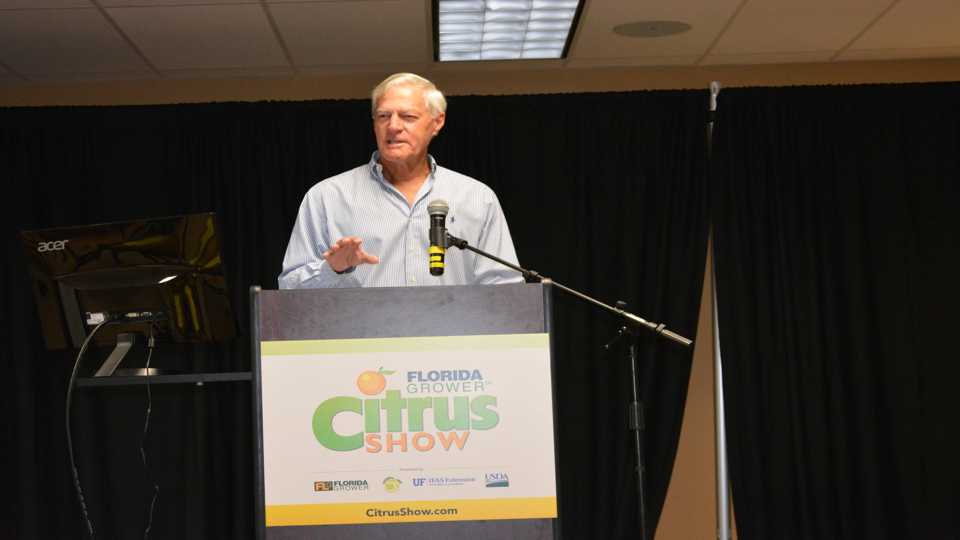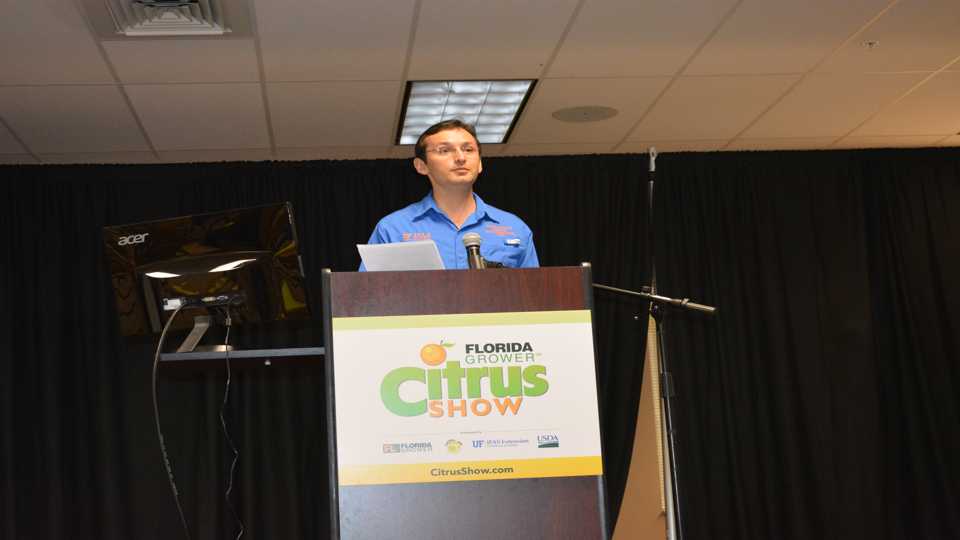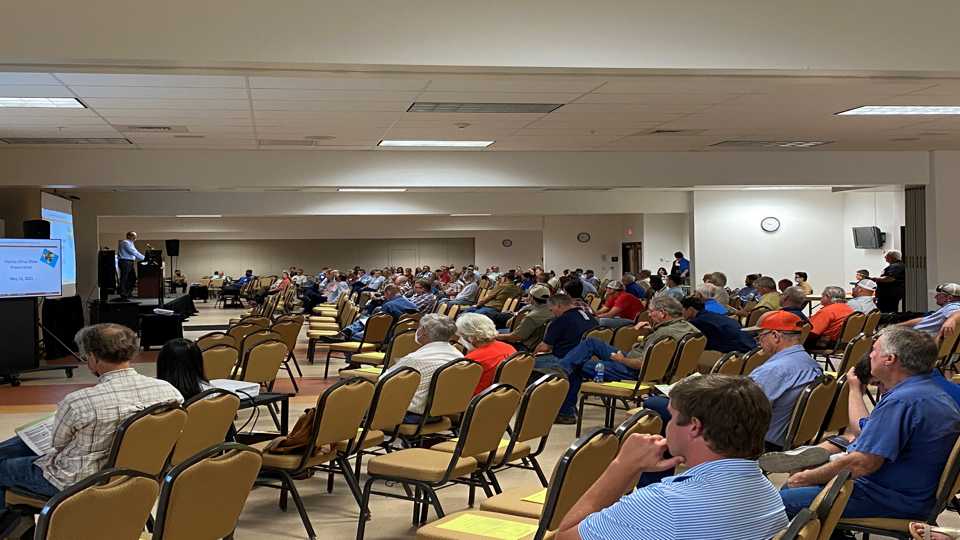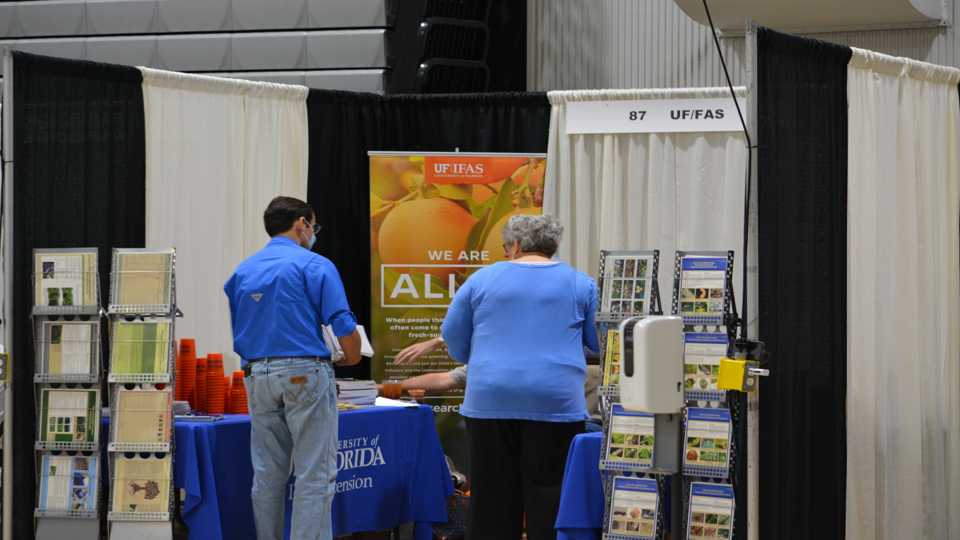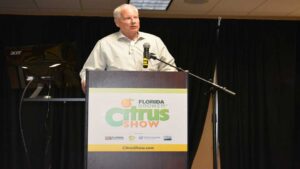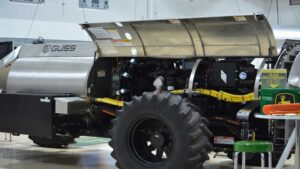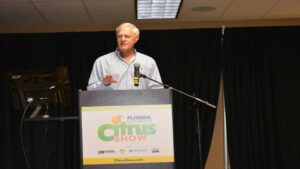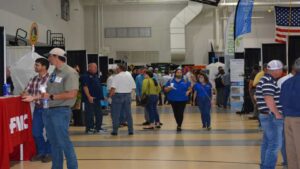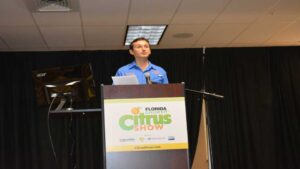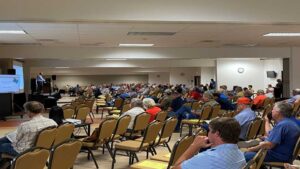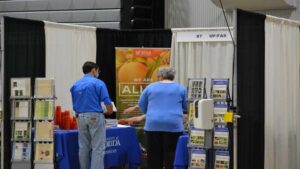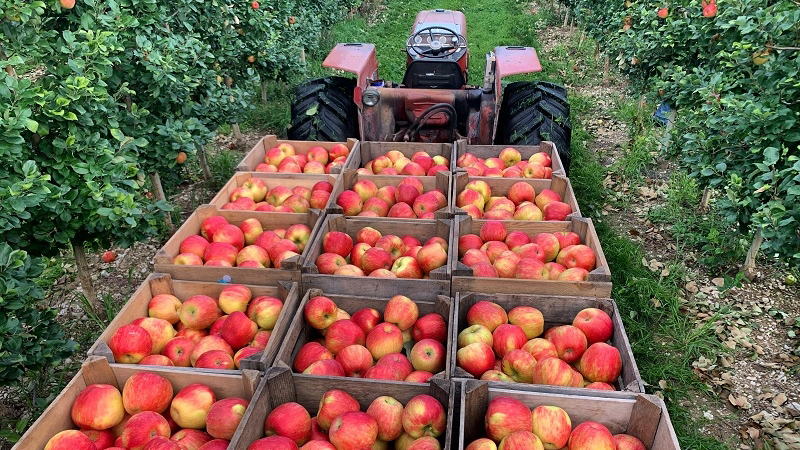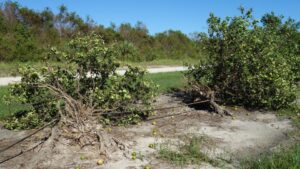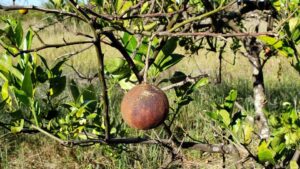2021 Florida Grower Citrus Show Brings Industry Back Together
On May 12-13, citrus growers, researchers, and industry stakeholders gathered in-person for the first time in more than a year for the Florida GrowerSM Citrus Show in Ft. Pierce. For the majority of people, it was the first major event they’ve attended since the COVID-19 pandemic shutdown last year.
It was a time of reunion and catching up with citrus industry peers. While COVID-19 safety protocols limited attendance, and things looked a little different in the education space and trade show floor because of those safety measures, the consensus was one of appreciation to the show organizers for being the first willing to step out and host such an event since the pandemic.
Hosted by Florida Grower® magazine in cooperation with UF/IFAS, USDA, and the Indian River Citrus League, the Show drew about 500 attendees and provided plenty of opportunities for education and networking during its two days of activities. Themed after the magazine’s initiative “We Believe in Florida Citrus,” the educational presentations and support from industry suppliers on the tradeshow floor underscored the belief in the future of the state’s signature crop.
Focused on HLB
Dr. Scott Angle, the Vice President of Agriculture and Natural Resources for the University of Florida, was on hand to welcome attendees as the show opened. He started his new role, which includes heading up UF/IFAS, only nine months ago in the midst of the pandemic shutdown. Like others, he acknowledged the Citrus Show marked a first for him as well and was happy to be among stakeholders at a large, in-person event.
But, he added, that he has been traveling the entire state visiting local Extension facilities and UF research centers meeting with scientists and more importantly the growers the institution serves. He stressed he is taking what he hears from the growers to heart.
“When I started nine months ago, my early message was I work for you and UF/IFAS works for you, and I want to reiterate that,” Angle noted. “If we are not providing you with the information or resources you need, you need to let us know. I have certainly gotten an earful from the citrus industry since I have gotten here. That passion comes from the fact this industry is in trouble. HLB is unlike any other disease that has been seen in agriculture before. It is unprecedented, but there are a lot of people working on it and a lot of money has been spent on the problem.
“I know in your mind because you are the one losing trees, we have not made enough progress or moved fast enough. Hearing all that you have said, we will be making this even more of a priority, which means we are going to redirect money to this effort and be sure our facility is focused on this disease. But we will remain flexible and be willing to think about new ideas for solutions. We are going put in the effort that you want to see.”
Research Progress
Rick Dantzler, COO of the Citrus Research and Development Foundation (CRDF), provided attendees an update on various research projects the foundation has funded. To date, 462 research projects have been funded since CRDF was founded in 2009.
Dantzler acknowledged the continued march of the disease despite the progress science has made over the years. The number of growers has dropped from 8,000 in 2009 to 2,500 today. Acreage has declined by about 100,000 acres.
“We can’t deny that things are tough,” he said. “We can’t act as though our research has gotten us farther than it has. We must be willing to try different things, and we are.”
Some of those changes are modifications to the request for proposal (RFP) process CRDF uses to fund most research, reforms in plant improvement, as well as the foundation’s new rootstock and scion trials, and peptide research.
“This is the best RFP we’ve had since I have been in this job,” he said. “We received 63 pre-proposals that we are working our way through. I’m convinced there are a number of short-term deliverables for growers that are in this batch.
“Reforms we are requiring for any plant improvement project CRDF funds will insure the work is done in a replicated way that provides growers with data they can depend on when making planting decisions.”
Dantzler acknowledged the excitement surrounding peptides. Hopes are high that it could be the next big thing in the battle against HLB.
He added, “CRDF is doing all it can to assist researchers in answering these questions: Do peptides work, and if they work, how must they be applied in order to work? We have been in touch with Dr. Hailing Jin regarding her finger lime peptide and numerous other researchers and companies to find out how we can help.”
Dr. Jin, a Plant Molecular Geneticist with UC-Riverside, addressed her research on the finger lime peptide during the Show. Jin found the peptide by examining plants such as the Australian finger lime known to possess natural tolerance to the bacteria that causes HLB, and she isolated the genes that contribute to this innate immunity. One of these genes produces the peptide.
Other educational topics included new varieties and rootstocks in development that show tolerance to HLB and have positive production and consumer traits. New technologies like precision agriculture and artificial intelligence applications to citrus to improve production and efficiency also were featured. Ways to manage fruit drop which has been a scourge in recent years also was addressed, and much more.
Plans are already underway for the 2022 Florida Grower Citrus Show. Stay tuned for more details.





